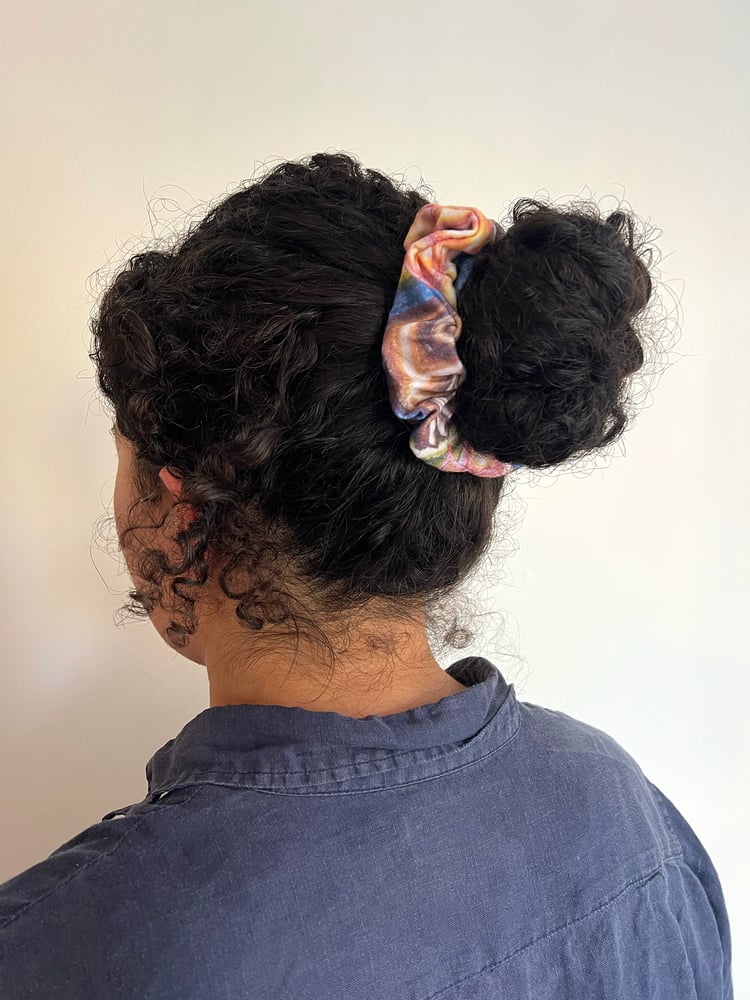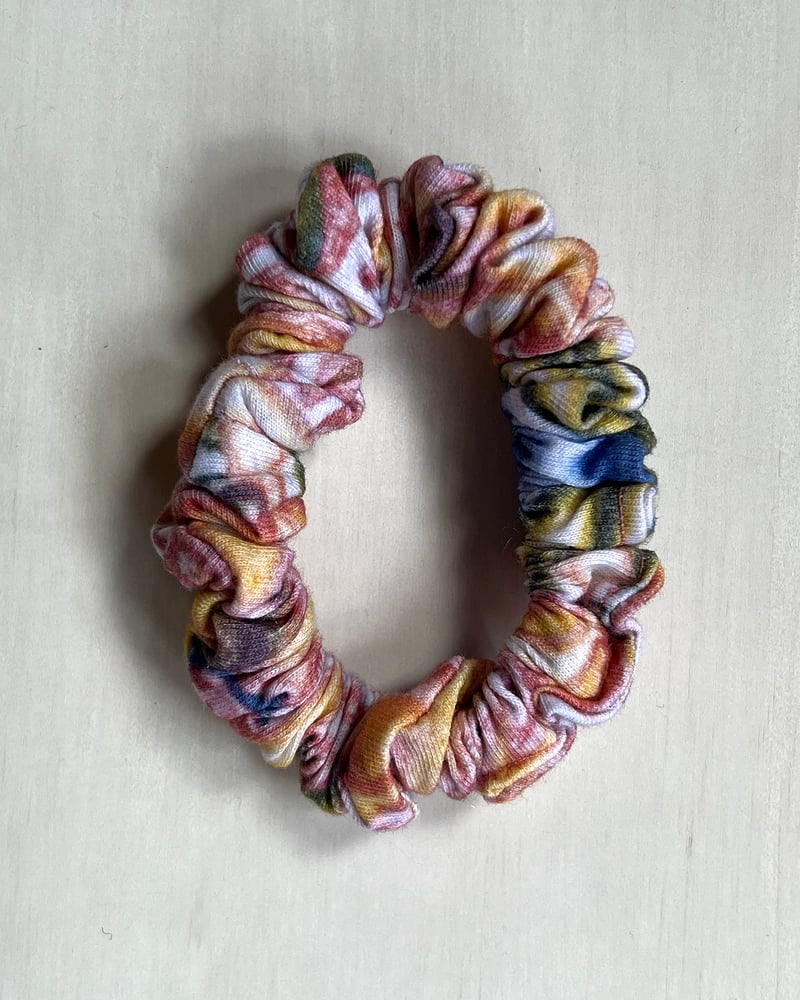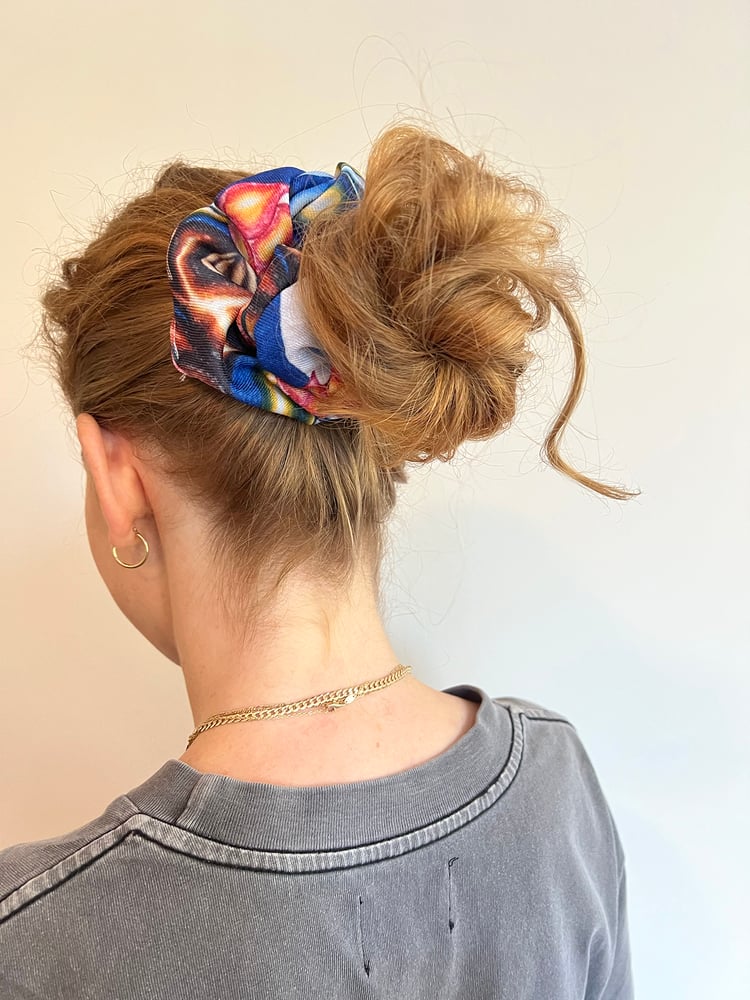




Artist: Morgan Hogg
Title: Tangaroa's scrunchies
Year: 2021
Materials: Recycled fabric (polyester and cotton)
Size: small and medium
Enter PICKUP as a discount code when you check out if you can collect in Sydney.
Morgan Hogg is an artist based on unceded Dharug land. In her video and installation practice, Hogg explores Indigenous perspectives within the Pacific Islands and the cultural impact of the modern-day on traditional standards. Through the perspective of her Indigenous Cook Island and Anglo-Saxon heritage, Hogg’s installations form a visual representation of the ongoing issues within the Pacific Islands and Indigenous cultures in the Southern Hemisphere.
To accompany the works released through Suite 7a, Morgan discusses her practice with artist, curator and writer Talia Smith. Read the full text here: https://medium.com/@Suite7a/749e6a0d4511
Extract from Talia Smith's interview with Morgan Hogg:
TS: There’s this really beautiful multimedia layering in your work that I feel breaks down ideas of time & history. In particular your work that’s at Hatched at the moment has an installation of water running down a screen, a projection onto that water and then you also perform. It’s like the past/present/future are all existing at once. Can you talk a little about your installs and why they are so layered.
MH: Thank you! I love this nature of the archive and multimedia layering. Coming from a Screen arts background, it’s so interesting to see footage from past lived experiences. I feel like sometimes when we watch films/footage, we transform into another time and space, and I love that people can feel that in my works. Yes, my work Ranginui + Papatūānuku was a very layered work. I think because my understanding of being biracial and coming from a Westernised background, it is essentially a visual representation of this overload of information flowing through my present identity. When it comes to my installation works, I want this intergenerational crossover to happen. I find that with different mediums comes different past lived experiences and it’s a universal way of interacting with the audience. Also from hearing feedback, it’s also creating this safe and inviting space for people to take a minute to really breathe and feel all these ideas of time and history for themselves.
TS: The first work I saw of yours was at Firstdraft and it was the work where you’re speaking with family (your mother?) and footage from the high school climate change protests in Aotearoa. Can you talk a little bit more about that work, Is that something you’d like to return to or is it still woven through the work you make?
MH: That work was called ‘Enua Mānea, it was an installation piece on the cautiousness of climate change in the Pacific and the loss of culture due to these conditions. It was my second-year university assignment, that was originally installed into one of the photo studios on campus. Created mainly within the hard restrictions of covid, which resulted in the use of a lot of archival footage. This was probably what really made me fall in love with the archive.
The interview in the work was with my Nanna and Mum, both from two very different generations growing up in the Pacific. I wanted to generate this conversation between three generations of Pasifika women on the current state of the Pacific Islands. How we all feel, and the next steps for us to take. I sat in my Nanna’s living room with a camera and tripod, and just started to talk to my mum and nanna. I feel like sometimes we can get caught up in the act of filming, so I just talked to them instead of interviewing them. This resulted in raw emotion of their personal perspectives of the changing of climate and loss of culture, and the regret that they have not passing it down to our generation.
I utilise installation as a mode of gathering familial objects and scents, to make the audience feel like they were sitting with us in my Nanna’s house listening to our conversation. Adding in found footage, to really jolt the scene to enforce this idea that climate change is real and is happening around us.
I would love to return to these concepts of climate change and cultural recollection. Although they are woven into my current works, I think I want to continue making art on the changing nature of educating the wider society on climate change, and the ideas around teaching traditions to the next generation.